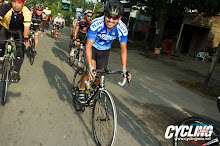What Causes Muscle Pain and Muscle Soreness After Exercise - What is DOMS?
Delayed onset muscle soreness (DOMS) describes a phenomenon of muscle pain, muscle soreness or muscle stiffness that is felt 12-48 hours after exercise, particularly at the beginning of a new an exercise program, after a change in sports activities, or after a dramatic increase in the duration or intensity of exercise.
This muscle pain is a normal response to unusual exertion and is part of an adaptation process that leads to greater stamina and strength as the muscles recover and build hypertrophy).
This sort of muscle pain is not quite the same as the muscle pain or fatigue you experience during exercise. This delayed pain is also very different than the acute, sudden pain of and injury such as muscle strains and sprains, which is marked by an abrupt, specific and sudden pain that occurs during activity and often causes swelling or bruising.
The delayed soreness of DOMS is generally at its worst within the first 2 days following the activity and subsides over the next few days.
Delayed onset muscle soreness is quite common and quite annoying, particularly for those beginning an exercise program or adding new activities. A beginning exerciser who bikes 10 miles, followed by push-ups and sit-ups is likely to experience muscle pain and soreness in the next day or two.
Delayed Onset Muscle Soreness - Causes
Delayed onset muscle soreness is thought to be a result of microscopic tearing of the muscle fibers. The amount of tearing (and soreness) depends on how hard and how long you exercise and what type of exercise you do. Any movement you aren't used to can lead to DOMS, but eccentric muscle contractions (movements that cause muscle to forcefully contract while it lengthens) seem to cause the most soreness.
Examples of eccentric muscle contractions include going down stairs, running downhill, lowering weights and the downward motion of squats and push-ups. In addition to small muscle tears there can be associated swelling in a muscle which may contribute to soreness.
Delayed Onset Muscle Soreness - Treatment
There is no one simple way to treat delayed onset muscle soreness. In fact, there has been an ongoing debate about both the cause and treatment of DOMS. In the past, gentle stretching was one of the recommended ways to reduce exercise related muscle soreness, but a study by Australian researchers published in 2007 found that stretching is not effective in avoiding muscle soreness.
So does anything work to reduce delayed-onset muscle soreness? Nothing is proven effective, but some people have found the following advice helpful, but it's best for an individual to try a few things to see what works for them. Ultimately, best advice for treating DOMS is to prevent it in the first place.
Here are some tips for dealing with soreness after exercise:
• Wait. Soreness will go away in 3 to 7 days with no special treatment.
• Try an Ice Bath or Contrast Water Bath. Although no clear evidence proves they are effective, many pro athletes use them and claim they work to reduce soreness.
• Use active recovery techniques. This strategy does have some support in the research. Perform some easy low-impact aerobic exercise to increase blood flow. This may help diminish muscle soreness.
• Use the RICE method of treating injuries.
• Although research doesn't find gentle stretching reduces soreness, some people find it simply feels good.
• Gently massage the affected muscles. Some research has found that massage was effective in alleviating DOMS by approximately 30% and reducing swelling, but it had no effects on muscle function.
• Try using a nonsteroidal anti-inflammatory medication (aspirin or ibuprofen) to reduce the soreness temporarily, though they won't actually speed healing.
• There is some evidence that performing Yoga may reduce DOMS.
• Avoid any vigorous activity that increases pain.
• Allow the soreness to subside thoroughly before performing any vigorous exercise.
• Don't forget to warm up completely before your next exercise session. There is some research that supports that a warm-up performed immediately prior to unaccustomed eccentric exercise produces small reductions in delayed-onset muscle soreness (but cool-down performed after exercise does not).
• ** If your pain persists longer than about 7 days or increases despite these measures, consult your physician.
• Learn something from the experience! Use prevention first.
Delayed Onset Muscle Soreness - Prevention
While DOMS is common and annoying, it is not a necessary part of exercise. There are many things you can do to prevent, avoid and shorten the duration of DOMS:
• Warm up thoroughly before activity and cool down completely afterward.
• Cool Down with gentle stretching after exercise.
• Follow the Ten Percent Rule. When beginning a new activity start gradually and build up your time and intensity no more than ten percent per week.
• Know the 10 Tips for Safe Workouts.
• Follow the Spring Training Fitness Tips.
• Hire a Personal Trainer if you aren't sure how to start a workout program that is safe and effective.
• Start a new weight lifting routine with light weights and high reps (10-12) and gradually increase the amount you lift over several weeks.
• Avoid making sudden major changes in the type of exercise you do.
• Avoid making sudden major changes in the amount of time that you exercise.
Subscribe to:
Post Comments (Atom)


1 comment:
Thanks for posting. this is very helpful article concerning Men's Health since they are the one mostly are experiencing this.
Post a Comment